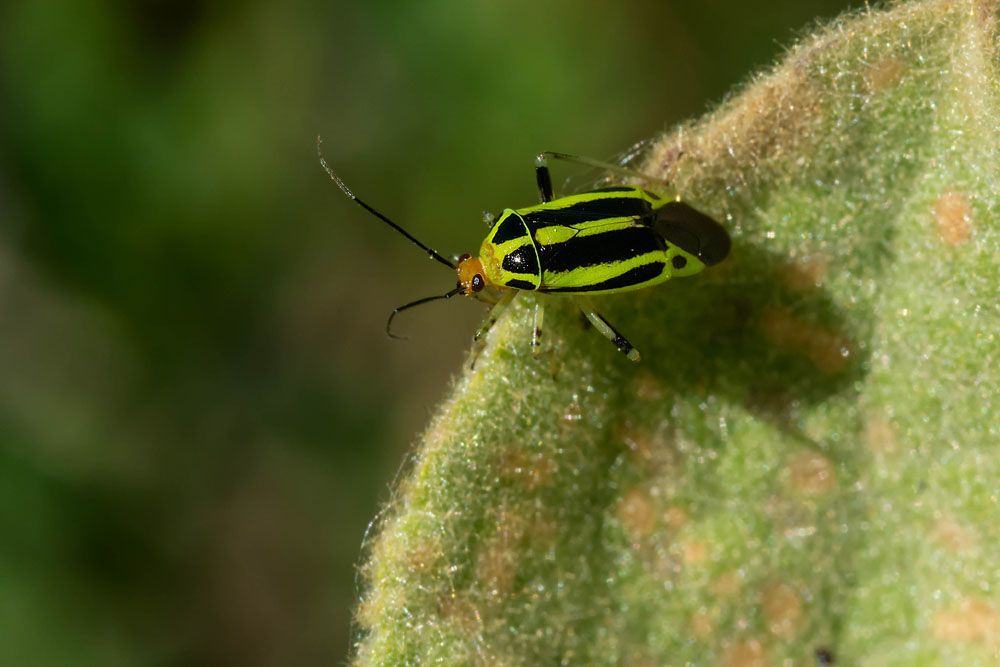
Fourlined Plant Bug – Poecilocapsus lineatus
Four lined Plant Bug: Appearance, Territory, Damage and Life
Latin name: Poecilocapsus lineatus
Appearances: The adults have a length of 7 to 7.5 millimeters (0.28 to 0.30 in) and a width of 3.5 millimeters (0.14 in). Adults have an orange head, prominent, dark red eyes, and four noticeable black lines against a background color that ranges from green to yellow. Through their five instars, nymphs grow quickly, and each molt causes their wing pads to expand. Except for the last instar, which is brilliant orange, nymphs have a bright red color with black markings.
Host plants: One of the few bugs that harms a variety of plants, including herbs that are hardly ever disturbed by anything else, they are one of the few pests. The young growth of numerous shrubs, including forsythia, deutzia, dogwood, and weigela, as well as Shasta daisies, Russian sage, and blue-mist shrubs, are other species that frequently suffer harm from this insect.
Territory: Native to North America, the four-lined plant insect is widespread across the majority of the eastern and midwestern United States as well as Canada. Despite its rarity, the four lined plant bug has been observed throughout much of the southern United States, with data from Lee and St. Lucie counties in Florida’s State Collection of Arthropods (FSCA) being the furthest south. It is unknown how many there are in the states to the west of the Rocky Mountains and in the northwest.
Damage insect caused: Four-lined plant bug damage is distinct. Each feeding location is identifiable as a dark, semi-transparent spot of collapsing leaf tissue. How the spots form depends on the characteristics of the host leaf. They can be circular or angular, 2 mm in diameter or smaller, green, rusty yellow, or reddish. A few weeks later, the dead tissue may fall off of certain leaves, looking like tiny holes created by flea beetle feeding.
Life cycle and habits: There is only one generation each year for this species. They overwinter as eggs, hatching in the middle to end of spring. Within six weeks of hatching, both sexes mate. Different eggs grow and hatch at different times. The eggs began to hatch in southern Pennsylvania between mid- and late April, and adults may be observed there by late May. The development occurred 1-3 weeks later in the state’s northern region. This is also true in other places: the development occurred 2-3 weeks earlier in Lafayette, Indiana, than in Ithaca, New York.
